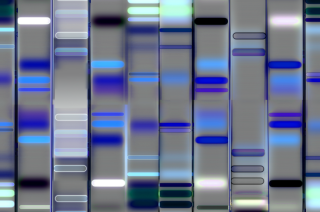
News
Breed4Food research successful with Nature papers in July 2014
With the publication of two articles in Nature communication and Nature Genetics the Breed4Food consortium shows that the Breed4Food research programme is on track.
Nature Genetics
Whole-genome sequencing of 234 bulls facilitates mapping of monogenic and complex traits in cattle
Hans D Daetwyler1–3, Aurélien Capitan4,5, Hubert Pausch6, Paul Stothard7, Rianne van Binsbergen8, Rasmus F Brøndum9, Xiaoping Liao7, Anis Djari10, Sabrina C Rodriguez4, Cécile Grohs4, Diane Esquerré11, Olivier Bouchez11, Marie-Noëlle Rossignol12, Christophe Klopp10, Dominique Rocha4, Sébastien Fritz5, André Eggen4, Phil J Bowman1,3, David Coote1,3, Amanda J Chamberlain1,3, Charlotte Anderson1, Curt P VanTassell13, Ina Hulsegge8, Mike E Goddard1,3,14, Bernt Guldbrandtsen9, Mogens S Lund9, Roel F Veerkamp8, Didier A Boichard4, Ruedi Fries6 & Ben J Hayes1–3
The 1000 bull genomes project supports the goal of accelerating the rates of genetic gain in domestic cattle while at the same time considering animal health and welfare by providing the annotated sequence variants and genotypes of key ancestor bulls. In the first phase of the 1000 bull genomes project, we sequenced the whole genomes of 234 cattle to an average of 8.3-fold coverage. This sequencing includes data for 129 individuals from the global Holstein-Friesian population, 43 individuals from the Fleckvieh breed and 15 individuals from the Jersey breed. We identified a total of 28.3 million variants, with an average of 1.44 heterozygous sites per kilobase for each individual. We demonstrate the use of this database in identifying a recessive mutation underlying embryonic death and a dominant mutation underlying lethal chrondrodysplasia. We also performed genome-wide association studies for milk production and curly coat, using imputed sequence variants, and identified variants associated with these traits in cattle.
Nature Communications
Genomic analysis reveals selection for Asian genes in European pigs following human-mediated introgression
Mirte Bosse1, Hendrik-Jan Megens1, Laurent A.F. Frantz1, Ole Madsen1, Greger Larson2, Yogesh Paudel1, Naomi Duijvesteijn1,3, Barbara Harlizius3, Yanick Hagemeijer1, Richard P.M.A. Crooijmans1 & Martien A.M. Groenen1
The independent domestication of local wild boar populations in Asia and Europe about 10,000 years ago led to distinct European and Asian pig breeds, each with very different phenotypic characteristics. During the Industrial Revolution, Chinese breeds were imported to Europe to improve commercial traits in European breeds. Here we demonstrate the presence of introgressed Asian haplotypes in European domestic pigs and selection signatures on some loci in these regions, using whole genome sequence data. The introgression signatures are widespread and the Asian haplotypes are rarely fixed. The Asian introgressed haplotypes are associated with regions harbouring genes involved in meat quality, development and fertility. We identify Asian-derived non-synonymous mutations in the AHR gene that associate with increased litter size in multiple European commercial lines. These findings demonstrate that increased fertility was an important breeding goal for early nineteenth century pig farmers, and that Asian variants of genes related to this trait were preferentially selected during the development of modern European pig breeds.